French Rolling Pin Vs Regular – What’s the Best Option?
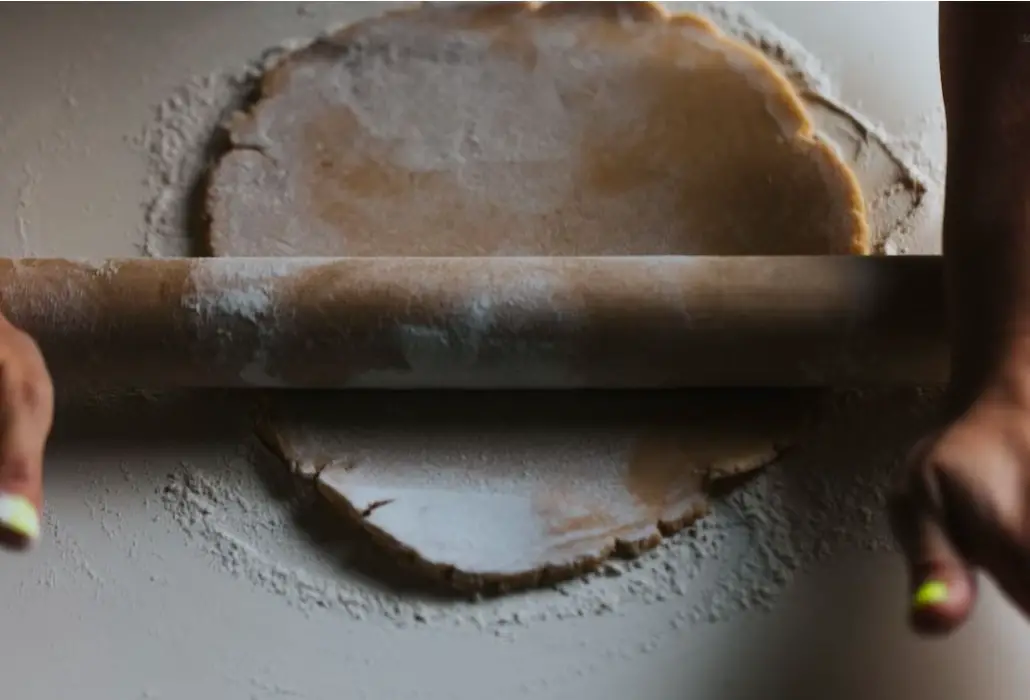
When it comes to perfecting your baking, whether at home or professionally, patience is a must.
Most of us have a favorite rolling pin we feel very comfortable with, even if it’s old and full of dents, and it may be time to consider an upgrade.
For most of us, finding one that feels right and is easy to work with takes time and trial and error. What is great is that all those different rolling pins have one purpose: to roll and shape the dough.
The article will explore the difference between the regular one and the fancy French rolling pin.
Intro to Rolling Pins
Rolling pins are fundamental tools for the baker and pastry chef when they need to shape dough for baking.
Regular Rolling Pin
The classic western-style rolling pin is used by all levels of home bakers and pastry chefs. They come with a smoothly shaped barrel with handles on the ends to provide a firm grip.
These can be machined with a handle, or a handle can be added.
French Rolling Pin
The French rolling pin is a round stick of wood that is smoothed for easy rolling and handling.
They are available in two basic shapes: the tapered pin and the dowel style. All french rolling pins are available in various sizes and made from different materials but most often wood.
A Quick Comparison
French Rolling Pin |
Regular Rolling Pin |
|
What to use for |
Great for pie crust and decorative purposes |
General dough rolling |
Ease of use |
Needs some time to learn to use it |
Better for beginners |
Maintenance |
Low maintenance required |
Maintenance is needed to keep it in peak shape |
What’s a French Rolling Pin?
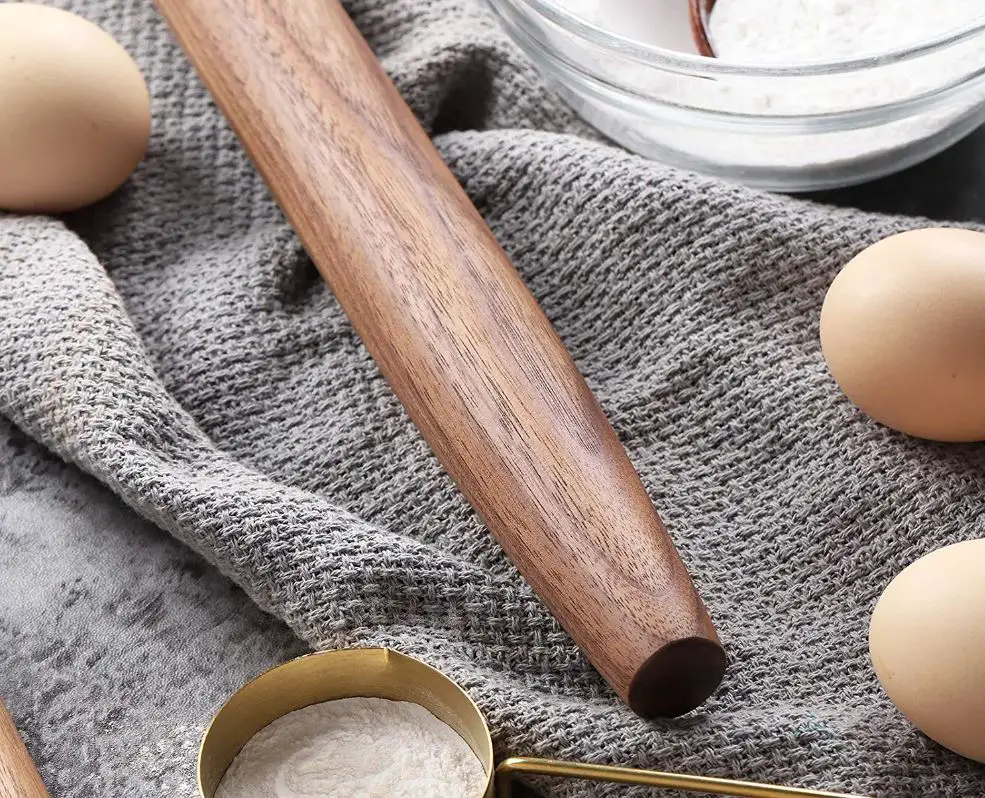
The simple explanation is that a French rolling pin is a wooden stick of a certain thickness with tapered ends.
Materials It’s Made From
These types of rolling pins are mostly made from strong and durable walnut or maple wood, but they are found in various other materials.
Pros
- French rolling pins are easy to clean
- Great for pastry dough
- No handles and no moving parts that can get dirty
Cons
- Efficiency includes a learning curve
- You need to use it properly for the best results
Common Problems
They are, in most cases, quite light, and it will take some time to get used to rolling dough with them.
What Food Is it Best for?
They are suited to all types of pastries and especially great to use with cookie dough.
Who Should Buy It?
While beginner bakers may struggle to get used to them, they are best suited for experienced bakers and pastry chefs.
What’s a Regular Rolling Pin?
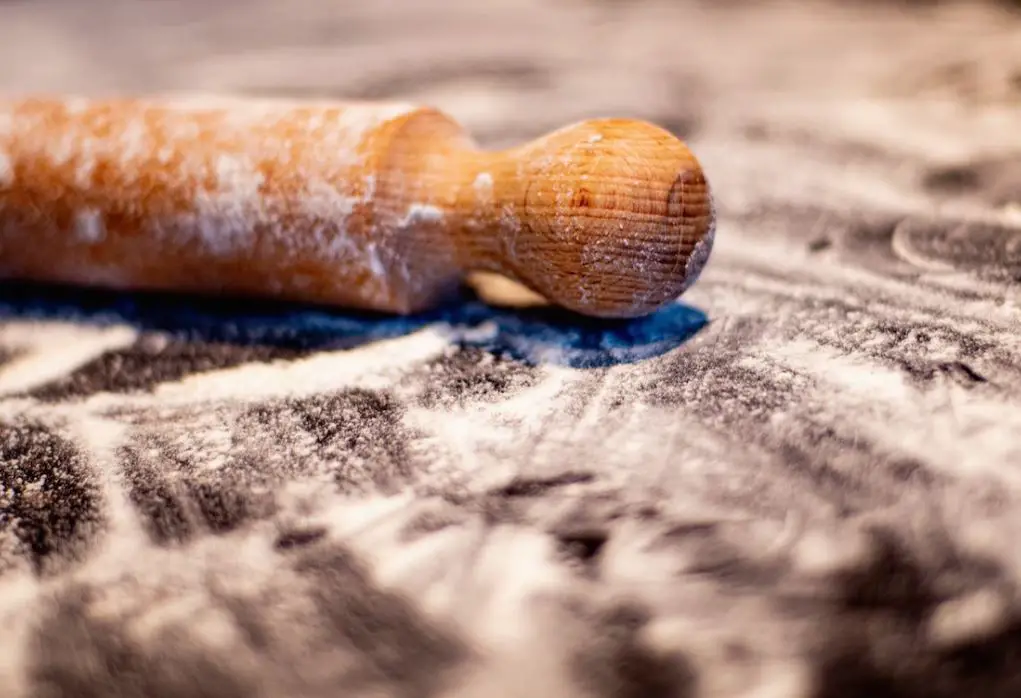
A regular rolling pin consists of a smooth main barrel and two handles on both sides that extend through the middle of the barrel.
Materials It’s Made From
These rolling pins are mostly made from sturdy wood and stainless steel, and some are even made from food-grade plastic materials.
Pros
- Very easy to use, especially for beginners
- Even thickness is achieved when rolling the dough
- Great for recreational bakers and beginners
Cons
- Metal parts of the handle can make it quite heavy
- It isn’t easy to clean inside the roller
- Maintenance is required to keep it in peak condition
Common Problems
They are not easy to keep in peak condition and require lots of maintenance. Additionally, it might be challenging to find the perfect size for your preferences.
What Food Is it Best for?
A regular rolling pin is the best option if you want to get great results with pie crust and making pizza.
Who Should Buy It?
This is a good choice for general use in the kitchen, and beginners will especially benefit from it.
What’s the Best Rolling Pin Material?
Smooth walnut and maple wood have been used for ages for rolling pins, while aluminum is a new and lightweight material that works great.
Which Is the Best Overall?
For more advanced baking, the simple wooden French rolling pin is preferred by professional bakers and pastry chefs for its simplicity.
Tapered vs. Straight Rolling Pin
A straight rolling pin is a bit more difficult to get used to, while a tapered one provides you with some gripping space.
Our Top Three Favorite French Rolling Pins
The Whetstone Woodenware French Rolling pin is beautifully crafted from smooth wood.
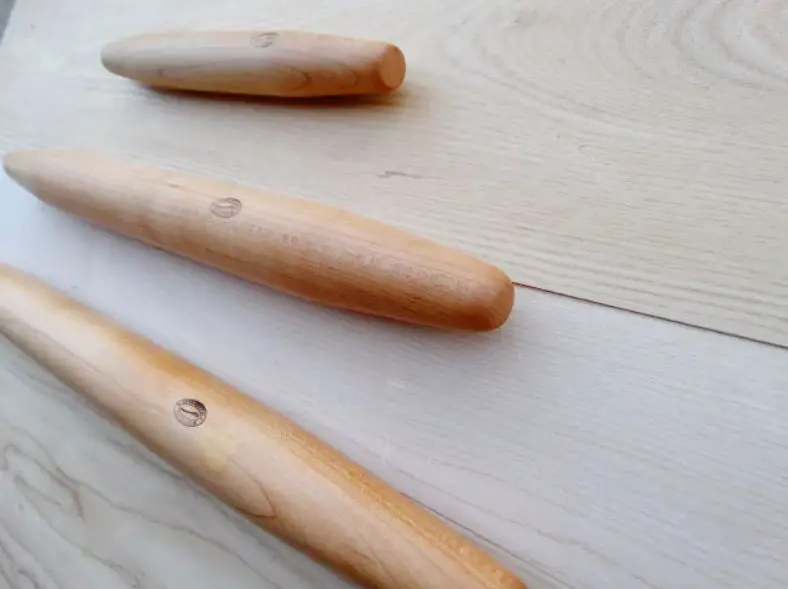
Pros
- Tapered for easy gripping
- Made from natural materials
- Available in various sizes
Cons
- Only the larger version has a flat area
Score: 98/100
Check Out More Reviews Here:
The J.K. Adams 19-Inch Maple Wood Rolling Dowel comes with durable hardwood construction.
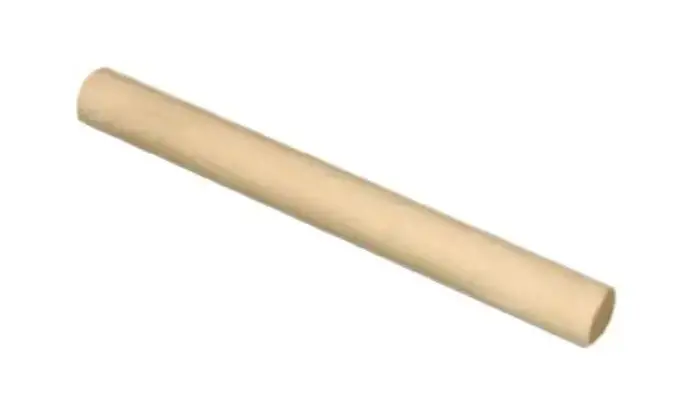
Pros
- Smooth finish to help resist sticking
- Made with a well-balanced construction
- It’s made from durable and sustainable maple wood
Cons
- The sticker on the wood may cause some problems
Score: 94/100
Check Out More Reviews Here:
The Muso Wood Decorative French Rolling Pin is beautifully crafted with a lightweight design.
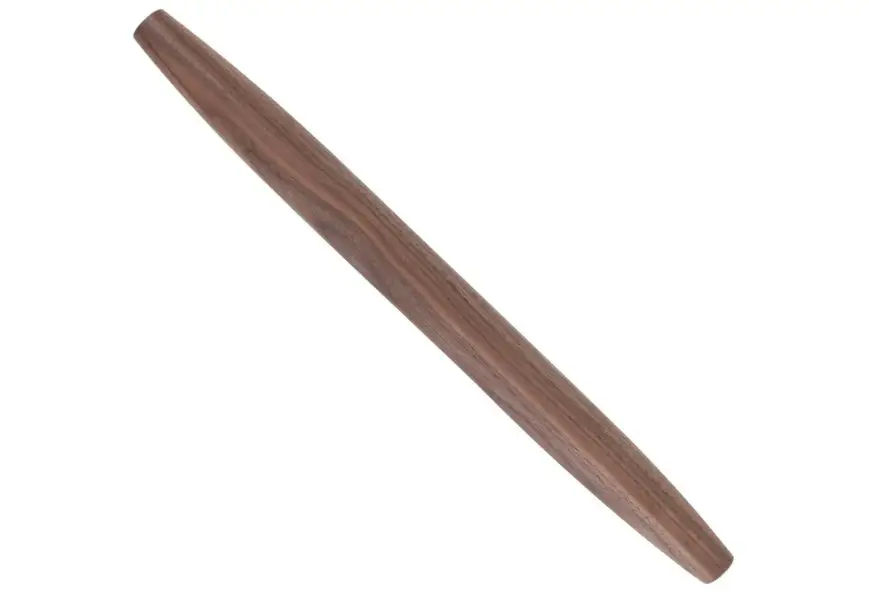
Pros
- It’s very easy to use
- Great for precision use and decorative purposes
- Strong and durable construction
Cons
- Only one size is available
Score: 96/100
Check Out More Reviews Here:
Our Top Three Favorite Regular Rolling Pins
The J.K. Adams 12-Inch Rolling Pin has easy grip handles for quick and easy dough rolling.
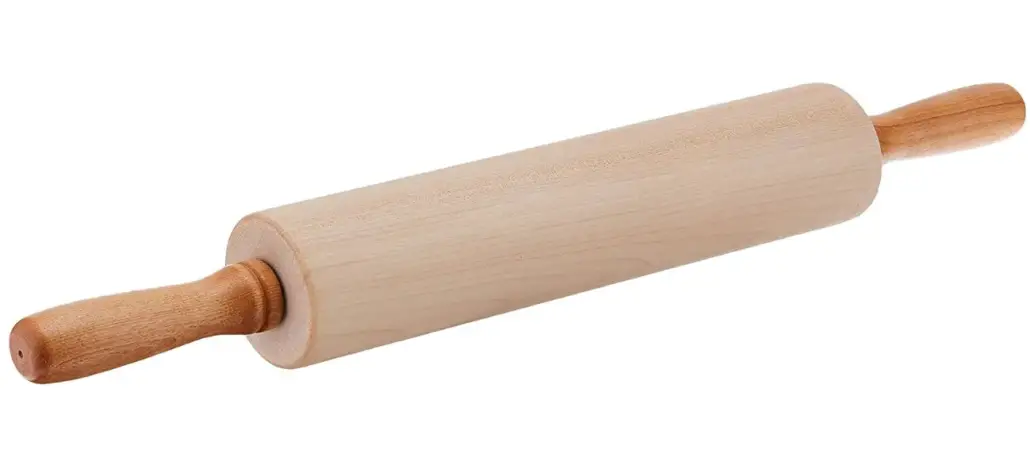
Pros
- Great for thick and thin dough
- Self lubricant bearings for easy rolling
- Comes with a lifetime warranty
Cons
- Hand cleaning only
Score: 92/100
Check Out More Reviews Here:
The Fox Run Polished Marble Rolling Pin has a cradle for comfortable storage.
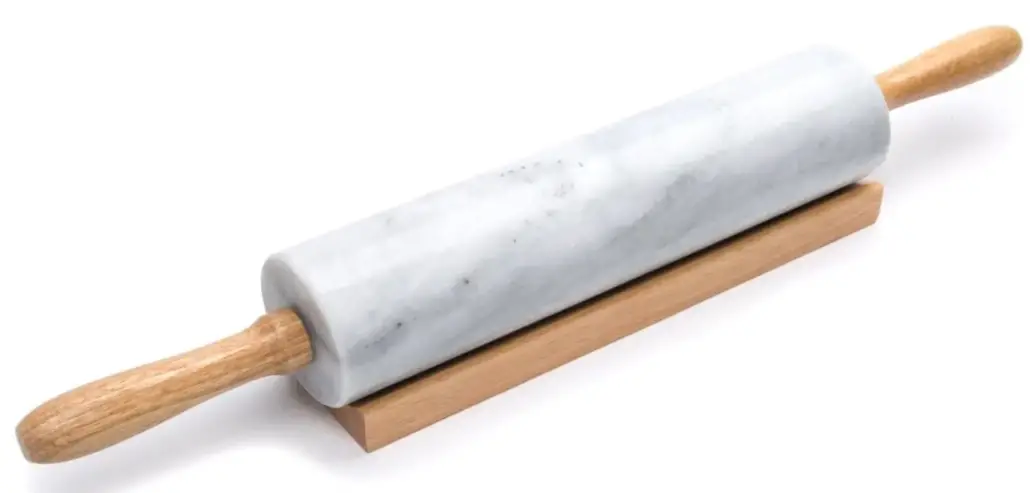
Pros
- The useful stand is included
- Great to use with thick and heavy dough
- Can keep the dough cool while rolling
Cons
- May absorb colors and oils
Score: 94/100
Check Out More Reviews Here:
The Farberware Classic Wood Rolling Pin is made from durable and moisture-resistant rosewood.

Pros
- Made from moisture-resistant materials
- Great for small to medium size dough
- A budget-friendly price tag attached
Cons
- Only the standard size is available
Score: 94/100
Check Out More Reviews Here:
FAQs
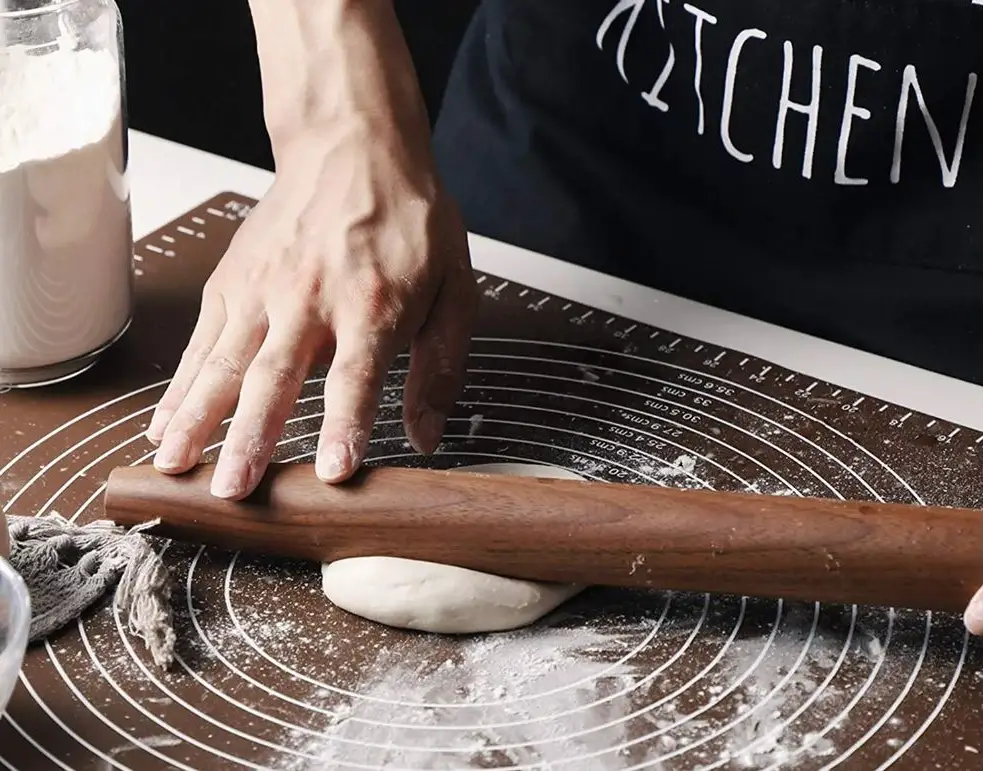
Q: What Is the Advantage of a French Rolling Pin?
The French rolling pin provides you with the option to feel how the dough is shaping while rolling it.
Q: s French Rolling Pin Good?
It’s great for many reasons, but the main factor is that it allows precise dough rolling.
Q: What Are the Three Types Of Rolling Pin?
There are basically three different types of rolling pins, and they are
- Standard rolling pin with a handle through the middle
- The tapered or dowel French rolling pin
- Classic shaker rolling pin with fixed handles
Q: What Type of Rolling Pin Is Better?
It depends on your skill level; beginners prefer the regular pin, while many professional pastry chefs love the French pin.
Q: hat Is the Best Size for a Rolling Pin?
A handleless pin of 18 to 22 inches and a standard rolling pin of around 18 inches is the ideal size.
Q: How Do You Maintain a French Rolling Pin?
Scrape all dough stuck to it off with the bench scraper, scrub with a damp cloth until clean, and let it dry. Wipe it down with some mineral oil, follow these instructions and watch this YouTube video on how to clean it.
Q: Why Is a French Rolling Pin Tapered?
Tapered French rolling pins are easier to hold onto and can be easily maneuvered while rolling the dough.
Q: Does the Size of a Rolling Pin Matter?
A too-large rolling pin may cause bowing, so using a standard-size pin is better.
Q: How Thick Is a French Rolling Pin?
A french rolling pin comes in a standard thickness of around 1.5 to 2 inches for easy rolling.
Q: Is a Marble or a Wooden Rolling Pin Better?
A marble rolling pin will help to keep puff pastry cool while rolling, and they are a bit heavier for easy flattening.
Q: Should Rolling Pins Be Heavy?
A lighter pin makes it easier to roll evenly and prevent cracks on the edges, while a medium weight makes it easier to roll it flat.
Q: Does Dough Stick to a Stainless Steel Rolling Pin?
If you use a good quality and well-designed stainless steel rolling pin, your dough should not stick to it.
Summary
Regular Rolling Pin
A regular rolling pin is the best option for beginners, and different materials can be used for great results.
Keeping these pins clean will require extra effort, and maintaining the bearings is essential for them to work properly.
French Rolling Pin
French pins come in various sizes and are mostly made from durable hardwood to provide a smooth rolling surface.
Maintenance is minimal, and keeping a French rolling pin clean is basic routine work.
Conclusion

Now that you know the difference between a French rolling pin and a regular one, you can make an informed choice.
Depending on your skill level in the kitchen, you know when it’s time to use a standard or French pin for the best results.
It’s important that you choose the right rolling pin to get the dough shaping job done without too many hassles. A good idea is to have at least one of each at your disposal, so try out one of each to feel them out.
Ultimately, it’s up to you to decide which one you choose but use the information shared here to decide for yourself which one is the best.



